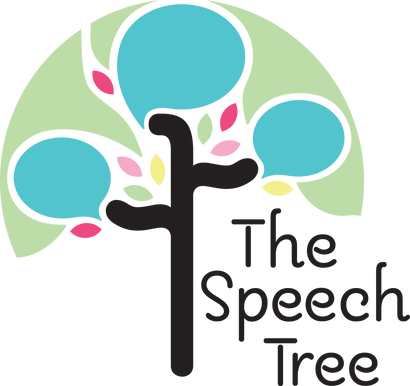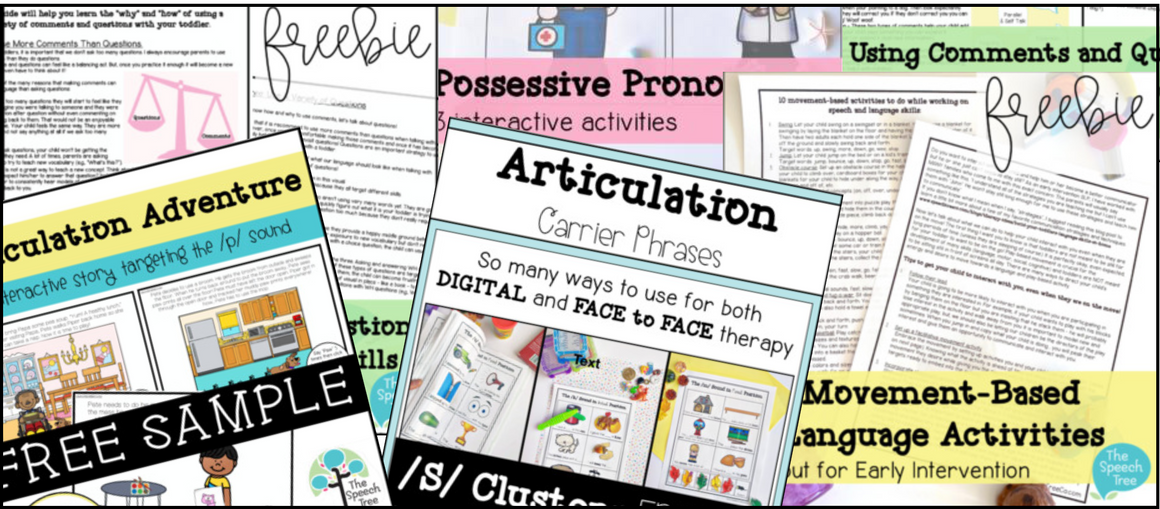The 3 do's of treating final consonant deletion

1. This first "do" of treating final consonant deletion is a big one... TARGET SELECTION.
Here are a few things to consider when selecting targets specifically for targeting final consonant deletion:
- High frequency words. Using high frequency words in therapy has been shown to reduce cognitive demands and improve intervention outcomes by creating phonological change in both treated and untreated sounds (Sosa, 2016).
- Stay away from voiced stops. I learned this the hard way. Targeting voiced stops will often result in an unwanted schwa at the end of the word (e.g., "bed" becomes "Bed-uh"). This is because with final consonant deletion therapy we are often exaggerating the final sounds. Due to the nature of voiced stops, we automatically add an "uh" at the end when we emphasize it. Instead, voiceless stops (t, k, p), fricatives (s, sh), and nasals (m, n), are all good options!
I find that it can be difficult to find final consonant deletion resources that do not target voiced stops. THIS RESOURCE is one of my favorite resources for targeting final consonant deletion due to the carefully selected target words.
- Start with single syllable words. When targeting final consonant deletion, you want to start with a handful of single syllable target words. We want our students to get a high number of ACCURATE trials. So, we need to provide them with the most facilitative context. For that reason, stay away from multisyllabic words.
- Bowen (2018), suggests using target words with a short vowel rather than long vowel: "In typical development, children produce codas (final consonants) more often after short (lax) vowels. When working on eliminating Final Consonant Deletion choose words like bus, check, cop, rather than base, choke, keep where the vowel is long (tense)."
2. Get visual
There are many different visuals and metaphors you can use to help your students better understand the need for final consonants. Play around with them until you find the right fit! Two of my favorite visuals are:
- The "tail sound" metaphor. Referring to the ending sound as a "tail sound" can be a helpful tool since our students are already familiar with the word "tail". You can compare the endings of words to animals having tails. How silly would they look without tails? That's how our words sound without endings!
- Mirrors. Mirrors can be a very helpful tool. Especially if the sound you are targeting is a visual sound like "m" or "p". A mirror will help the child see their mouth physically close as they produce the ending sound.
3. Less words, more trials
You actually do not need that many target words in order to create a system wide phonological change. This is especially true if you are using the minimal pairs or cycles approach. The cycles approach suggests selecting anywhere from 3-5 target words.
Choosing a small amount of target words helps the child become very familiar with these words and helps facilitate more accurate productions. The goal of phonological therapy is to get ACCURATE trials. Without a high amount of accurate trials, the system wide change will not occur. Some SLPs and researchers suggest aiming for 100 accurate productions per therapy session.
It can be hard to get 100 accurate trials in one session, especially for the preschool age population. That is why I always try to incorporate some form of pretend play into the activity. I've found the best success getting in a high amount of trials when I am playing short, repetitive games. Using mini objects helps keep my students engaged as well as using this product for final consonant deletion.
Here is an example of how to embed 3 target words into a play based activity.
Target words: "hop", "top", "soup".
Place some mini objects in a sensory bin or mystery bag on one side of the room. Place a bowl on top of the table on the other side of the room. Student hops over to the sensory bin, grabs a mini object and places it in the bowl on top of the table. The bowl represents a silly soup that we are making together. In between each step of this activity, the child will stop and practice the target word a few times.
Looking for an interactive, no prep resource to target final consonant deletion or articulation at the phrase level?
Supporting research:
https://pubs.asha.org/doi/full/10.1044/2017_LSHSS-17-0080
https://www.speech-language-therapy.com/index.php?option=com_content&view=article&id=21
https://pubs.asha.org/doi/10.1044/persp1.SIG1.57
1 Response
Leave a comment
Comments will be approved before showing up.







Jessye
April 18, 2021
I’m always on the look out for Final Consonant Deletion activities and ideas so very excited to try these. Love that you added the research and always nice to see what I am doing fits with the recommendations. Thanks